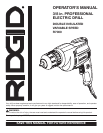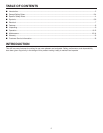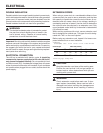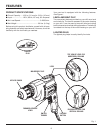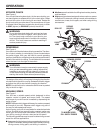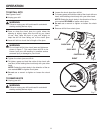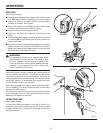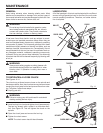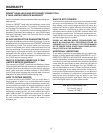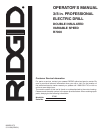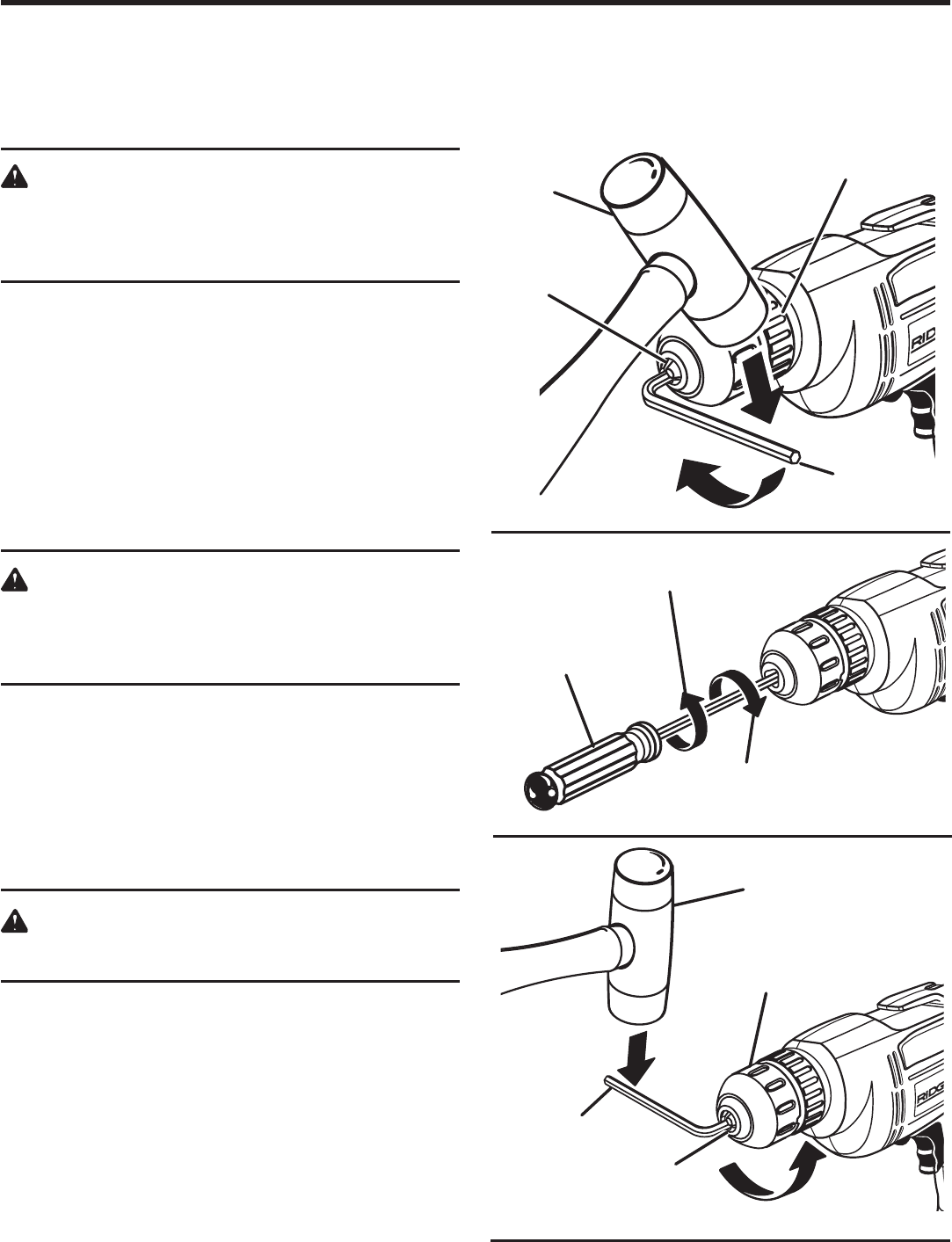
GENERAL
Avoid using solvents when cleaning plastic parts. Most
plastics are susceptible to damage from various types of
commercial solvents and may be damaged by their use. Use
clean cloths to remove dirt, carbon dust, etc.
WARNING:
Do not at any time let brake fluids, gasoline, petro-
leum-based products, penetrating oils, etc. come in
contact with plastic parts. They contain chemicals
that can damage, weaken or destroy plastic.
It has been found that electric tools are subject to accel-
erated wear and possible premature failure when they are
used on fiberglass boats, sports cars, wallboard, spackling
compounds, or plaster. The chips and grindings from these
materials are highly abrasive to electric tool parts, such as
bearings, brushes, commutators, etc. Consequently, it is not
recommended that this tool be used for extended work on
any fiberglass material, wallboard, spackling compounds,
or plaster. During any use on these materials, it is extremely
important that the tool is cleaned frequently by blowing with
an air jet.
WARNING:
Always wear safety goggles or safety glasses with
side shields during power tool operation or when
blowing dust. If operation is dusty, also wear a
dust mask.
TO RETIGHTEN A LOOSE CHUCK
See Figures 10 -11.
The chuck may at times become loose on the spindle and
develop a wobble. Also, the chuck screw may become loose
causing the chuck jaws to bind and prevent them from clos-
ing. To tighten, follow these steps:
n Unplug your drill.
WARNING:
Failure to unplug your drill could result in accidental
starting causing serious injury.
n Insert hex key into chuck and tighten chuck jaws securely.
Tap hex key sharply with a mallet in a clockwise direc-
tion. See Figure 10. This will tighten the chuck on the
spindle.
n Open the chuck jaws and remove the hex key.
n Tighten the chuck screw.
NOTE: The chuck screw has left hand threads.
LUBRICATION
All of the bearings in this tool are lubricated with a sufficient
amount of high-grade lubricant for the life of the unit under
normal operating conditions. Therefore, no further lubrica-
tion is required.
13
MALLET
CHUCK JAWS
HEX KEY
CHUCK
Fig. 12
®
MAINTENANCE
®
SCREW-
DRIVER
Fig. 11
LOOSEN
TIGHTEN
MALLET
HEX
KEY
CHUCK
CHUCK JAWS
Fig. 10
®



